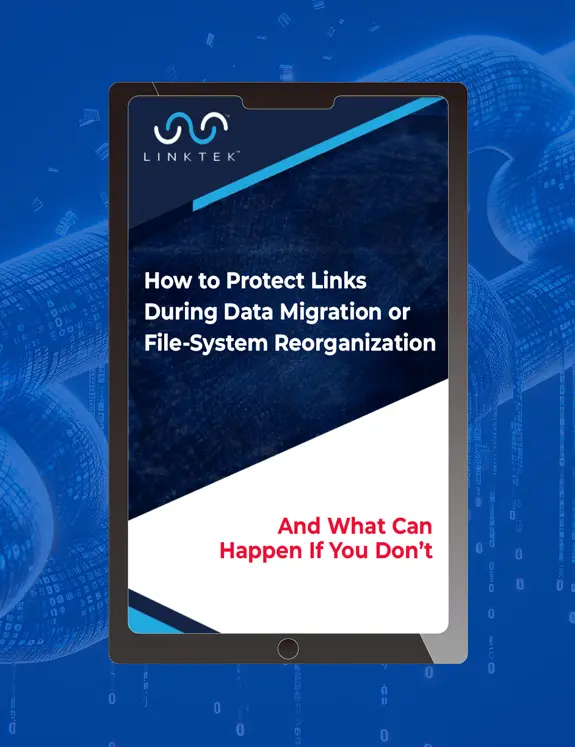
IT Tips & Tricks
10 Dark Sides of The Cloud
By Ed Clark
Published 19 September 2025
Let me be clear that I am a huge proponent of using a professional cloud service or a well-run private cloud. With a few categorical exceptions, most organizations should be on the cloud. (“in” the cloud?)
But clouds have dark sides. And you should be aware of these so you can take measures to protect yourself (or at least your job).
The great news is that if you are aware of these perils and take care of them early on, they won’t harm you.
1. Infinite Resources (and the Bill That Follows)
Imagine your company credit card with no limit — tempting, right? Now imagine the look on your CFO’s face when the monthly bill hits with all the finesse of a sledgehammer.
Cloud convenience can turn into a billing nightmare. Your budget? Poof.
Sometimes, the cloud feels like magic. Need more storage? Click. Need more computing power? Click. But this convenience can turn into a billing nightmare. Your budget? Poof.
There’s even a name for it. “Bill shock” is one of the cloud’s favorite party tricks, and it hits hardest when the process of making cloud resources available to users (provisioning) runs wild — without guardrails.
The Fix: Implement rigorous cost monitoring and tagging. AWS, Azure and Google Cloud Platform offer a variety of cost management tools, alerts and cost calculators. In addition to native cloud provider tools, there are many third-party cloud cost management platforms (like CloudZero, CloudHealth, Cloudability, Finout, Holori, and more) that offer advanced features, multi-cloud capabilities, deeper analytics and automation for cost optimization. These can be particularly useful for organizations using multiple cloud providers. Make use of these spending alerts and cost optimization tools. Regularly audit unused or underutilized resources. Just because you can scale endlessly doesn’t mean you should.
2. The Tangled Web of Vendor Lock-In
Vendor ecosystems are cozy — until they aren’t. Once your infrastructure is tightly interwoven with a provider’s proprietary tools and APIs (Application Programming Interfaces), getting out can feel like trying to escape a toxic relationship with a narcissist.
Migration costs, re-architecting headaches and data egress fees all conspire to keep you where you are. Suddenly, “cloud freedom” can feel more like a gilded cage.
The Fix: Embrace containers, open standards and multi-cloud strategies. Always evaluate the long-term implications of your architecture. Think of vendor relationships like dating — you want an exit clause, some kind of option to leave if things go sideways.
Once your infrastructure is tightly interwoven with a provider’s proprietary tools and APIs (Application Programming Interfaces), getting out can feel like trying to escape a toxic relationship with a narcissist.
3. The Shared Responsibility Model: It’s Not All on Them
Yes, cloud providers invest heavily in securing their infrastructure. But that doesn’t mean your applications and data are automatically safe.
The shared responsibility model means they secure the cloud and you secure what’s in it. That includes configuring IAM (Identity and Access Management) roles, patching VMs (Virtual Machines), managing data and keeping up with compliance.
The Fix: Know the shared responsibility model like the back of your hand. Implement strong IAM policies, encrypt everything, employ multifactor authentication where appropriate. Enforce least-privilege access, rotate credentials regularly and audit logs continuously. Segment your networks and patch systems without delay. Here’s a handy checklist:

Vendor lock-in: Do you have an exit strategy in case you need it?
- Use least privilege principles: Grant only the permissions necessary for each role or workload. Regularly review and revoke excess privileges.
- Enable logging and monitoring: Turn on services like AWS CloudTrail, Azure Monitor or Google Cloud Audit Logs to track all activity.
- Rotate keys and credentials: Set automated key and password rotation schedules to reduce the risk of credential compromise. This means that keys and passwords are automatically changed at pre-set intervals (or as a result of a security event), without requiring manual intervention.
- Apply network segmentation and firewalls: Use virtual private clouds (VPCs), subnet isolation and security groups to control traffic.
- Patch and update regularly: Keep OS, containers and dependencies up to date to prevent known exploits.
- Use managed services where possible: They often include built-in security controls and reduce your operational overhead.
- Conduct security assessments: Perform regular penetration testing and vulnerability scans.
Have an incident response plan: Document and rehearse how you’ll detect, respond to, and recover from security events.
Sure, the castle is secure — but only if you lock the gates.
4. Performance Gremlins and Latency Lags
The cloud can scale, sure — but that doesn’t guarantee performance. Latency issues, especially across geographic zones, can impact responsiveness. And noisy neighbors on shared infrastructure? It’s still a thing.
That “snappy” app in testing might drag in production because someone else’s app decided to hog resources.
The Fix: Choose regions strategically and use CDNs (Content Delivery Networks).
Cloud providers have data centers in multiple geographic locations (regions). Selecting a region closer to your users can:
- Reduce latency (giving you faster response times).
- Help meet data residency requirements.
- Improve reliability (you can fail over to another region if needed).
Tip: Always check which services are available in your chosen region, as not all regions offer every feature.
A CDN stores copies of your content (like images, videos and scripts) on servers distributed worldwide. This helps:
- Deliver content faster to users no matter where they are.
- Reduce the load on your primary servers.
- Improve website and application performance.

Are your users leaking data without you even knowing?
Example services:
- Amazon CloudFront
- Azure CDN
- Cloudflare
For critical apps, consider reserved instances or dedicated hosts. Here are some of the benefits:
Reserved Instances:
Reserved instances (RIs) offer cloud users a way to save money by committing to a specific amount of computing resources from a cloud provider for a fixed duration. This typically involves an upfront or periodic payment, leading to substantial discounts over on-demand pricing.
There are two types of RIs: Standard (offers the highest savings — often up to 74% — and a fixed term of one to three years) and Convertible (slightly less cost savings — around 54% — but greater flexibility in configuration).
Benefit: Predictable workloads that run continuously.
Dedicated Hosts:
You get physical servers dedicated to your organization.
Benefits:
- Better compliance and licensing control
- Isolation from other tenants for security or regulatory reasons
The great news is that if you are aware of these perils and take care of them early on, they won’t harm you.
Don’t assume the cloud is fast by default — test, tune and plan. Even in the cloud, performance isn’t guaranteed. To optimize speed and reliability:
- Benchmark performance regularly (for example, measure latency and throughput)
- Tune configurations (for example, adjust auto-scaling policies, database indexes, storage types)
- Plan for growth (make sure your architecture scales as demand increases)
5. The Compliance Conundrum and Data Sovereignty
Regulatory compliance in the cloud? Yeah, it’s complicated. Whether it’s GDPR, HIPAA or your local data protection laws, the stakes are high, and the rules can be murky.
Worse still, storing data in the wrong region might expose it to foreign laws you didn’t sign up for. That’s data sovereignty — and it’s a beast.
The Fix: Vet your cloud provider’s certifications and compliance resources. Map your data flows to understand exactly where information is stored and processed. Implement data residency restrictions, strong encryption and access controls from day one. Classify and tag sensitive data to apply the right safeguards automatically. Document your compliance posture and update it regularly. Remember, compliance isn’t a checkbox — it’s an ongoing process and a design requirement.

Don’t let data sovereignty bite you in the, well, you know…
6. The Skill Gap and the Ever-Evolving Landscape
The cloud evolves faster than you can update your LinkedIn profile. Yesterday’s skills don’t cut it in today’s multi-service, API-heavy world.
Traditional sysadmin (system administrator) roles now demand fluency in CI/CD (Continuous Integration/Continuous Delivery) pipelines, Terraform, IAM, and about 37 other acronyms. Good luck finding talent who’s good at all of them.
One of the biggest myths about the cloud? That it frees up IT.
The Fix: Invest in continuous training and certifications and set aside dedicated budgets and time for learning. Maintain a skills inventory to identify gaps and plan development. Encourage cross-training across Ops disciplines, and pair newer team members with seasoned vets for mentorship. Create sandbox environments so staff can experiment safely. Standardize tools to reduce complexity and bring in consultants when needed. Celebrate and reward skill growth — keeping your team’s capabilities as elastic as your infrastructure.
7. The Single Point of Failure
Cloud outages happen. Whether it’s a bug, a misconfiguration or someone fat-fingering a command in a data center somewhere, it’s not a question of if, but when.
If you’re relying on a single region or AZ (Availability Zone), your so-called “resilient” system might be one hiccup away from downtime.
The Fix: Build for failure. Use multi-AZ deployments, cross-region replication, and create documented, tested failover plans. Automate backups, and practice restores. Implement health checks, auto-healing and DNS failover. Use Infrastructure as Code for fast recovery. Monitor your system closely — and try controlled chaos engineering to test your assumptions. Resilience isn’t optional — it’s the foundation of Cloud 101.

Millions of websites were down after a fire at a French cloud services firm. Do you have a plan B if there’s a cloud outage?
8. The Shadow IT Lurking in the Corners
When spinning up new tools is so easy, users sometimes bypass IT altogether. Hello, shadow IT — aka your worst visibility nightmare.
These unmonitored apps might be storing sensitive data, syncing with other cloud services and ignoring compliance altogether.
Sure, the castle is secure — but only if you lock the gates.
The Fix: Educate users about the risks of shadow IT and provide secure, sanctioned alternatives. Publish an approved app catalog and make the request process simple and fast. Use Cloud Access Security Brokers (CASBs) to discover unsanctioned tools and monitor usage. Enable Single Sign-On to centralize access control and visibility. Segment sensitive data and enforce Data Loss Prevention policies. If it’s lurking in the shadows, it’s a risk you can’t ignore.
9. Migration Is Seldom Magic
Lift and shift? More like drag and scream. Legacy systems rarely migrate cleanly. Those quirky old applications were never meant to run in elastic environments.
Unforeseen issues — from code incompatibilities to broken permission models — often emerge only after migration. At that point, going back is like trying to unscramble an egg.
The Fix: Start with a full discovery and dependency map, and assess cloud readiness using automated tools. Involve migration consultants early and prioritize applications by complexity and business impact. Define clear success metrics and rollback plans. Use phased rollouts, pilot migrations, and rigorous testing — including load and failure simulations. Document configurations and dependencies carefully. Communicate progress transparently and budget time to optimize after migration. Treat it like a full reconstruction project, not a forklift job.

Trying to fix a failed cloud migration can genuinely feel like trying to unscramble an egg.
10. The Cloud’s Hidden IT Burden
One of the biggest myths about the cloud? That it frees up IT. What it actually does is shift the work. Sure, there’s no more rack-and-stack, hardware maintenance or manual backups. But there is identity federation, infrastructure-as-code, and security audits.
Plus, you’re now managing costs, compliance and more “Ops” disciplines than a multitasking Marvel consortium.
Cloud outages happen. Whether it’s a bug, a misconfiguration or someone fat-fingering a command in a data center somewhere, it’s not a question of if, but when.
The Fix: Upskill your team and automate wherever possible. Create clear ownership boundaries across DevOps, SecOps, FinOps, CloudOps and any other department whose title ends in “Ops.” Invest in infrastructure-as-code and self-service portals to reduce manual work. Use cost visibility tools with budgets and alerts. Hold regular cross-functional reviews to align priorities. Establish a Cloud Center of Excellence to share best practices and maintain standards. Encourage continuous learning and certifications, and integrate monitoring across disciplines. The cloud redefines IT — it doesn’t retire it.
Final Thoughts: Navigating the Nuances
Yes, the cloud is powerful. Yes, it’s transformative. But it has some trade-offs, hidden pitfalls and the occasional “surprise” invoice. The great news is that if you are aware of these perils and take care of them early on, they won’t harm you.
Approach it with a clear vision, practical expectations and solid strategy, and the benefits will far outweigh the bumps in the road.
So, by all means — cloud on. But cloud wisely. And one last tip? Keep a calm, well-prepared explanation ready for when the invoice lands and the finance team starts asking questions.
I hope that these ten points help you cloud smarter, not harder. See you out there! (Up there?)

The cloud doesn’t mean less work for the IT team. It simply changes it — and may actually increase it.

Ed Clark
LinkTek COO
Recent Comments
- No recent comments available.




Leave a Comment